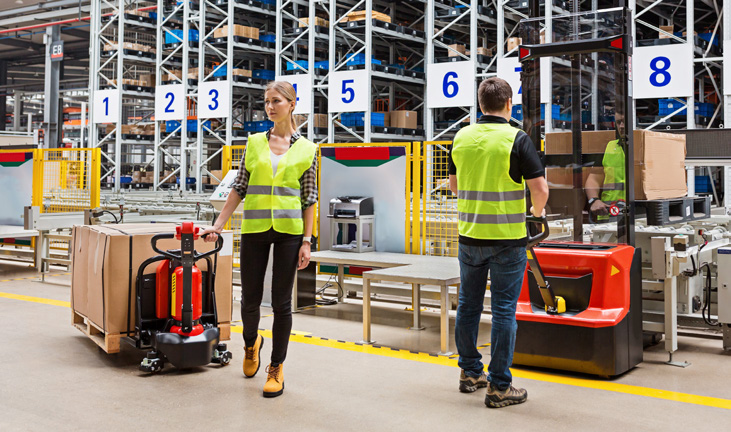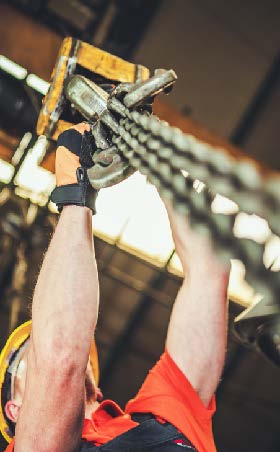Contributing physicians in this story

Absenteeism cost employers $225.8 billion dollars annually in the United States, equaling to approximately $1,685 per employee according to the CDC Foundation—a nonprofit organization established by Congress to aid the Centers for Disease Control. The Foundation also reports that over the past 10 years, the injury and illness incidence rates have declined from approximately 5 cases per 100 full-time employees to approximately 3 cases per 100 employees for private companies, while the incidence of injury and illness for state and government employees remains slightly higher. Midsize establishments who employ between 50 and 249 workers have the highest rate of injury or illness cases by establishment size, while small establishments who employ fewer than 11 workers have the lowest rate of injury or illness cases. When looking at the distribution of nonfatal occupational injury and illness cases by category of illness for private industry employers, nearly 95% of cases are on-the-job injuries, while the other 5% includes illnesses such as respiratory conditions, hearing loss, skin diseases, etc. The financial impact of workplace injury in the US is astonishing to say the least.
Since injuries in the workplace account for the majority of days away from work, ergonomics in the workplace plays a crucial role in promoting safe work practices and healthy work environments. For employers of all sizes, this increases profitability but it also increases employee satisfaction, which results in a higher productivity level and decrease in turnover. Larger companies with larger profits may be able to sustain the financial impacts of a workplace injury; however, an injury within a small company can be devastating.
Ergonomics is an applied science concerned with designing and arranging the tools and workspace people use so that the employee interacts most efficiently and safely within the environment. Ergonomics is not forcing the person to fit the job, but rather trying to eliminate risk factors such as hot or cold environments, awkward positions, vibration, forceful exertions, and repetitive motions to allow employees to work safely and efficiently.
Repeated or continual exposure to 1 or more of these factors initially may lead to fatigue and discomfort, but over time, it can lead to acute or chronic injuries.
Improve the fit
 Ergonomic improvements are changes made to “improve the fit” between the demands of the task and the capability of the worker. These improvements can be both administrative as well as from an engineering standpoint. Examples of administrative improvements include providing employees with a variety in jobs to eliminate or reduce repetition, adjust work schedules, pace, and practices. Employers can also provide recovery time and rotate workers through jobs that use different muscles, body parts, or postures. Administratively, some companies have written policies regarding lifting and what weights or pieces of equipment should be lifted by 1 person and what should be lifted by 2 or more people. Some companies ingeniously tackle this issue with colored stickers that identify how many employees are required to move specific parts or equipment.
Ergonomic improvements are changes made to “improve the fit” between the demands of the task and the capability of the worker. These improvements can be both administrative as well as from an engineering standpoint. Examples of administrative improvements include providing employees with a variety in jobs to eliminate or reduce repetition, adjust work schedules, pace, and practices. Employers can also provide recovery time and rotate workers through jobs that use different muscles, body parts, or postures. Administratively, some companies have written policies regarding lifting and what weights or pieces of equipment should be lifted by 1 person and what should be lifted by 2 or more people. Some companies ingeniously tackle this issue with colored stickers that identify how many employees are required to move specific parts or equipment.
From an engineering standpoint, many improvements can be applied in the work place, such as modifying processes and providing or replacing items such as tools and equipment. Engineering can also include rearranging or redesigning equipment, workstations, packaging, parts, products, or materials. Obviously, the financial impact of these engineering issues is something that every company has to determine. Employers base these decisions on the budget, cost, and the amount of risk that the company is
comfortable taking.
The industrial athlete
 Employees should not be placed in positions that they physically cannot perform because it can lead to failure or injury. This is where the concept of “The Industrial Athlete” comes in. An employee or industrial worker whose occupation involves physical effort is essentially a unique type of athlete. The industrial athlete’s performance has direct implications on the success of the company, similar to the success of an athletic team.
Employees should not be placed in positions that they physically cannot perform because it can lead to failure or injury. This is where the concept of “The Industrial Athlete” comes in. An employee or industrial worker whose occupation involves physical effort is essentially a unique type of athlete. The industrial athlete’s performance has direct implications on the success of the company, similar to the success of an athletic team.
Following the sports medicine model of prevention, a comprehensive program that includes conditioning, early intervention, and progressive treatment allows the industrial athlete to perform at his or her best in a safe environment. Employers can do a jobsite analysis, which is a tool that allows employers to produce a physical job performance for specific jobs. It identifies the specific physical requirements of a job, such as how many times the employee has to lift from the floor to overhead, and the specific weight requirement.
If the job description includes a physical requirement, then the employer should perform a Post-Offer Screen, or a Physical Ability Screen, which confirms that the employee applying for a particular position can physically perform that job. If the job requires an employee to lift 50 pounds overhead, 5 times a day then you test that specific task. If the employee cannot do the task, he or she is not eligible for the job. If the employer places an employee in a job without testing, the employee is potentially setup for failure or injury.
The following example fits right into the industrial athlete metaphor. A football team would not start a 300 pound player at running back because you want a running back that is light, fast, and agile. Your football team makes sure that each player is in a position that he or she is most likely to succeed in while also avoiding injury and that is what an employer should do as well.
A healthy workforce
Ergonomics is an investment that offers a high-end return for both employer and employee. With a strong ergonomics plan, employers see benefits such as a reduction in medical expenses, decreased turnover, less absenteeism, higher productivity, and improved quality workmanship. For the employee, morale improves because the company shows a commitment to their wellbeing. Most businesses cannot thrive without a healthy workforce and ergonomics is a key component for a successful business.
Author: Jake Gudger, MD | Columbus, Georgia
Last edited on July 27, 2022